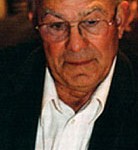High rollers may come and high rollers may go, but the towering casinos of Las Vegas remain, literally pillars in one of the most successful growth industries ever devised by humanity. It turns out that there is more to the game than luck; some of the world’s sharpest minds have been intrigued with the prospects of walking out the door with their pockets stuffed with “house money”.
Counting cards is an exercise in mathematics and statistical probability used to win big at the blackjack tables. What it really enables the player to do is place larger bets on hands in which they know (based on the other cards they have seen turned) they have likely advantage. In one sense, it isn’t cheating at all, but that technicality won’t matter to the pit bosses who catch people doing it every day. Banning suspected card-counters is a common practice – the only exception resides in Atlantic City, a result of a lawsuit filed by one exceptionally successful gambler (see below).
Casinos take their own measures to mitigate card counting, everything from simple distractions by the staff in order to break the player’s concentration to shuffling the deck automatically whenever a bet is raised. Below are some of the best in the blackjack business when it comes to counting cards.








Speak Your Mind